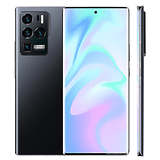ZTE Axon 30 Ultra review: Ticking off all the right boxes is inadequate
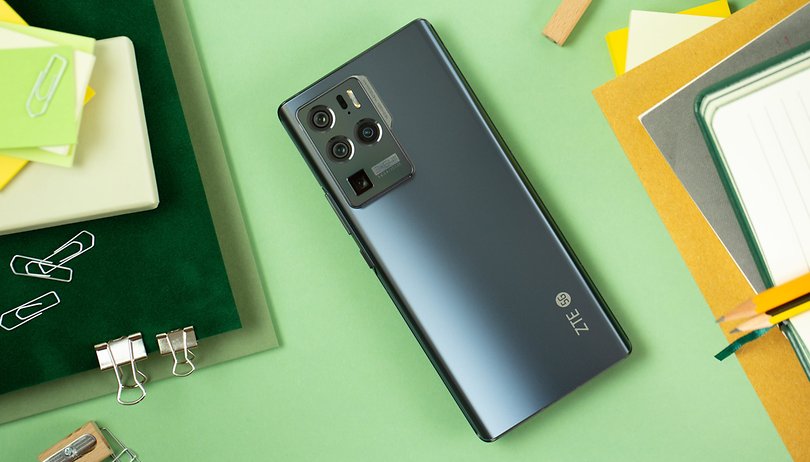

The ZTE Axon 30 Ultra was meant to go up head-to-head against the Android-powered flagships from Samsung, Xiaomi, and Oppo while making sure it remains pocket-friendly in terms of pricing. ZTE certainly did not skimp on the hardware, offering a 144Hz refresh rate display, a Snapdragon 888 SoC, and even a quad 64MP camera module - but are those enough to consider this as a premium smartphone? The answer lies in my full review.
Good
- 144Hz AMOLED display
- Powerful Snapdragon 888 chipset
- Telephoto lens with 5x optical zoom
- Solid battery life
- Relatively affordable price
Bad
- Unreliable photo processing
- Fast charging is a bit slow
- Overheating when gaming intensively
- No IP certification
- No wireless charging support
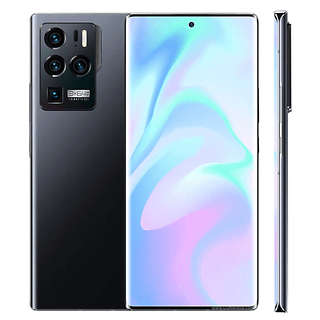
ZTE Axon 30 Ultra in a nutshell
The ZTE Axon 30 Ultra is available since May 27, 2021, and arrived in two configurations of 8/128 GB and 12/256 GB, retailing for $749 and $849, respectively.
Despite its price, it was positioned as a premium flagship in a market segment that can be considered as the very pinnacle. Yes, I mentioned "despite" its price, even though it is still expensive for most consumers. But when you compare it against the $1,250 charged for the Samsung Galaxy S21 Ultra, or the $1,150 sticker price of the Oppo Find X3 Pro, or the $1,200 asking price for the Xiaomi Mi 11 Ultra, ZTE's price seems to be far more reasonable at once.
Basically, the smartphone claims to offer the hardware specifications and user experience of an ultra flagship for the price of a basic flagship model. Obviously, the promise sounds too good to be true. Despite a specifications sheet that ticks all of the right boxes in 2021, the ZTE Axon 30 Ultra still had to settle for several necessary compromises.
However, despite doing so and having a history of sporadic software updates, I can understand that this combination for a flagship, whilst imperfect, mainly focuses on the hardware/price ratio in order to catch your attention, especially when it dips below the $800 mark.
Design and screen: A Samsung Galaxy Note 20 Ultra with a moustache
The ZTE Axon 30 Ultra shares a close resemblance with the Samsung Galaxy Note 20 Ultra, sporting a very similar design language with a strong focus on screen quality - at least when it comes to the specifications. An AMOLED display with a 144Hz refresh rate, a 300Hz tactile sampling rate, curved edges, a Gorilla Glass 5 back - all of the required goodies are part of the deal.
I liked the:
- 144 Hz refresh rate.
- 300 Hz touch sampling rate.
- Elegant design.
- Unique back coating that limits fingerprints.
I didn't like the:
- Lack of IP certification.
- Power button could be more responsive.
- Average screen brightness.
- Lack of a 3.5 mm jack.
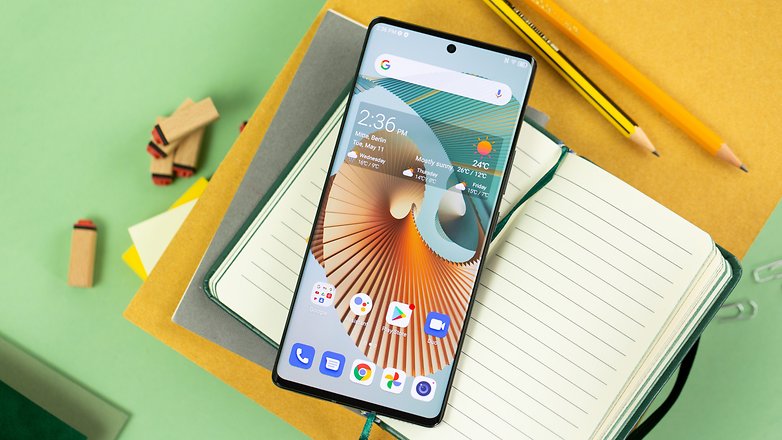
I'm not going to rant on and on for the next three hours about this, but if you want to see it to believe it how closely similar the ZTE Axon 30 Ultra is to the Samsung Galaxy Note 20 Ultra, then I would like to invite you to watch MKBHD's review on YouTube.
Yes, we do find the exact same design comprising all the right angles and flats, in addition to the subtly curved 2.5D edges. I do not know whether this is an issue with its finishing or a deliberate design choice, but along the way, I found the aluminum frame to be raised, interrupting the curved display - which means it is not all that comfortable to touch.

At the back, the camera module is absolutely monstrous in size since we're talking about an "ultra" flagship with 4 lenses arranged in a large, rectangular island with a very thin fin (which I think functions as a spacer), where you find the words "Neovision Photography" printed. The matte coating at the back is very nice, ensuring that this does not turn into a fingerprint magnet.
Let's return to the front of the smartphone, finding a 6.67-inch Full HD+ AMOLED display with a 1080 x 2400 pixels resolution in addition to a pixel density of 395 dpi. Nothing too impressive here, apart from the display sporting an adaptive 144Hz refresh rate and a 300Hz touch sampling rate.
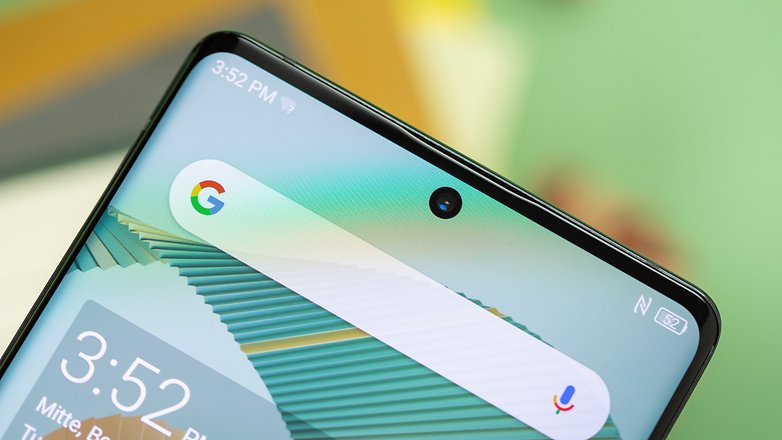
As always, Android 11's FPS counter (which can be enabled via developer options) reveals that you rarely hit 144 FPS outside of Twitter and selected game titles. Most of the time, I was limited to 120 FPS for browsing and 60 Hz when streaming videos or music.
The brightness seemed to be pretty average, where the screen remained visible and mostly legible even when I was outdoors trying out its camera under the hot afternoon sun, but I have definitely seen and experienced better.
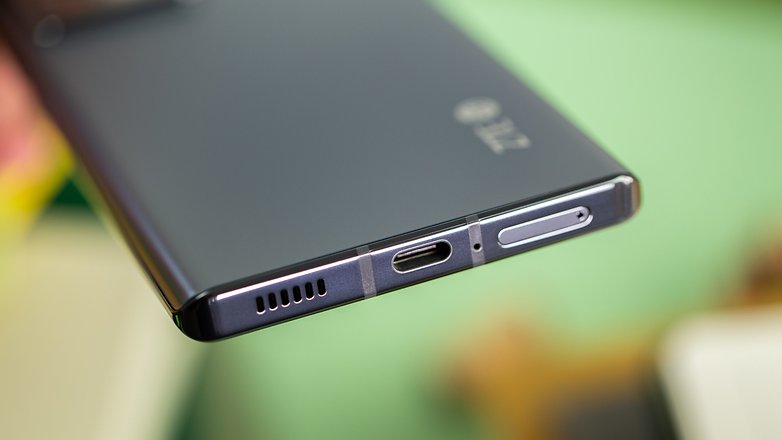
Overall, the ZTE Axon 30 Ultra feels a bit like it's been dressed up as the Galaxy Note 20 Ultra. Design-wise, I find the ZTE Axon 30 Ultra's looks to be convincing. The screen also functions well and reinforces the impression of holding a premium product in your hands.
User interface: MyOS 11 needs to be refined
The ZTE Axon 30 Ultra runs on Android 11 with its very own skin known as MyOS 11 which is quite far cry from the stock Android experience, requiring much refinement in my opinion.
In general, I do not spend too much time on a smartphone's user interface since I have already devoted a full review to them as is the case with OxygenOS 11 or MIUI, or because I have already discussed it in detail in a different smartphone review. The whole idea is to avoid redundancy and pointless repetition, but this is the very first time where I am using a MyOS-powered handset, and the experience was rather confusing. Here is my brief opinion about it.
To put it simply, it pretty much follows the same philosophy as other Android skins from Chinese manufacturers, i.e. an interface that's visually far from the clean stock Android experience with a more cluttered look. Visually, we can say that MyOS remains true to this tradition with its large colored volume sliders as well as humongous widgets in the quick menu.
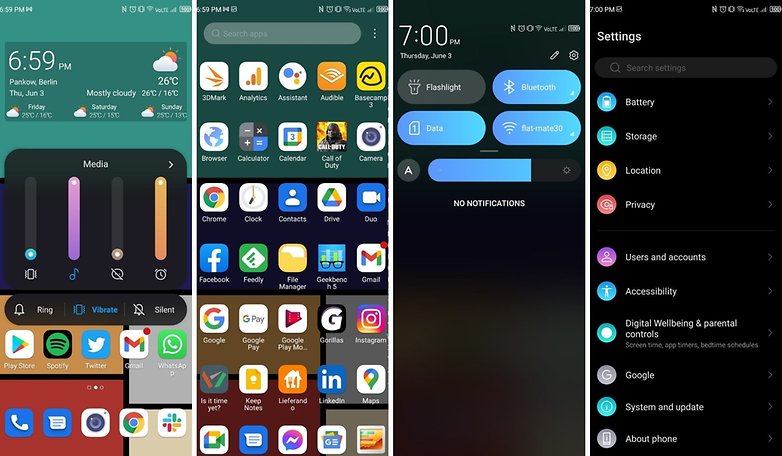
However, in terms of features, it's easy to navigate to where you want to go. There aren't 10 billion customization options or tons of bloatware and pre-installed applications to wade through (except for Google apps, a browser, and a native file manager).
But we do feel that this skin still lacks maturity. I experienced display bugs with certain apps, especially with Twitter where my wallpaper would appear transparent each time I reloaded my news feed. Sometimes, the touch screen would become unresponsive when I accessed the app drawer.
Currently, the smartphone has received the May 2021 security patch, but we shouldn't such updates to be regular. The ZTE Axon 20 5G which was launched last year still hasn't received Android 11 according to what I know. However, ZTE has guaranteed that the Android 12 update would be arriving in 2022 for the Axon 30 Ultra.
Personally, ZTE's MyOS interface hasn't seriously dented my user experience. Yes, the overlay is visually funky but all of Android 11's features are there. This is clearly not the smartphone's strongest suit, but it's mostly the manufacturer's track record with updates that worries me.
Performance: Snapdragon 888 SoC remains the chipset to beat
The ZTE is powered by a Snapdragon 888 SoC, similar to all of the other Android flagships that were launched since the beginning of this year, hence it does not veer too far away from the mean in terms of performance.
It is unsurprising then to see its benchmark results. Just as I would not raise any eyebrows when pushing this processor to the hilt in benchmarks only to be met with overheating issues and thermal throttling.
ZTE Axon 30 Ultra
| Benchmarks | ZTE Axon 30 Ultra | Xiaomi Mi 11 Ultra | OnePlus 9 Pro | Samsung Galaxy S21 Ultra |
|---|---|---|---|---|
| 3D Mark Wild Life | 5808 | 5621 | 5670 | 7373 |
| 3D Mark Wild Life Stress Test | Failed, overheated | Failed, overheated | 5698 |
5175 |
| Geekbench 5 (Single / Multi) | 1124/3582 | 1123/3619 | 1112/3633 |
942 / 3407 |
| PassMark Memory |
31.347 | 30.460 | 31.891 |
31.752 |
| PassMark disk |
92.550 | 115.473 | 112.370 |
81.108 |
I subjected the ZTE Axon 30 Ultra to the classic battery of graphics tests that I've been using for months. Among them, 3DMark's Wild Life Stress Test simulates intensive and prolonged gaming use for 20 minutes. Unfortunately, I could never arrive at the end of this benchmark because the smartphone kept closing the application after 5 minutes while being hot to the touch.
In reality, gaming sessions for me are normally limited to 30 minutes to an hour on Call of Duty Mobile with its graphics cranked all the way to the maximum, enabling all graphics options while setting the frame rate at its highest level. Doing so, I did not experience any dropped frames at all, which is a good thing.
Overall, the ZTE Axon 30 Ultra is no better or worse than any other Snapdragon 888-powered Android flagship. But Qualcomm as well as smartphone manufacturers really need to work on this overheating issue for 2022.
Camera performance: Trio of 64 MP lenses and a periscope telephoto lens
The ZTE Axon 30 Ultra 5G features a quad-64 MP camera configuration with a rather strange mix of sensors from a hardware perspective.
ZTE Axon 30 Ultra
| Lens | Specifications |
|---|---|
| Main wide-angle Sony IMX686 64 MP | f/1.6 aperture / 26 mm / sensor size 1/1.72", PDAF, Laser AF, OIS |
| Ultra wide-angle Samsung GW3 64 MP | f/2.2 aperture / 13 mm / 120˚ FOV / 1/1.97" sensor size |
| Portrait lens Samsung GW3 64 MP | f/1.9 aperture / 35 mm / 1/1.97" sensor size / PDAF |
| 8 MP telephoto lens | f/3.4 aperture / 123 mm / 1/4.0" size, PDAF, OIS, 5x optical zoom |
I liked the:
- Versatile camera setup.
- Dedicated telephoto lens with 5x zoom.
- Convincing ultra wide-angle lens performance.
I didn't like the:
- Useless 60x zoom limit.
- Average night mode performance.
- Less than satisfactory photo processing.
- Why a 64 MP portrait lens?
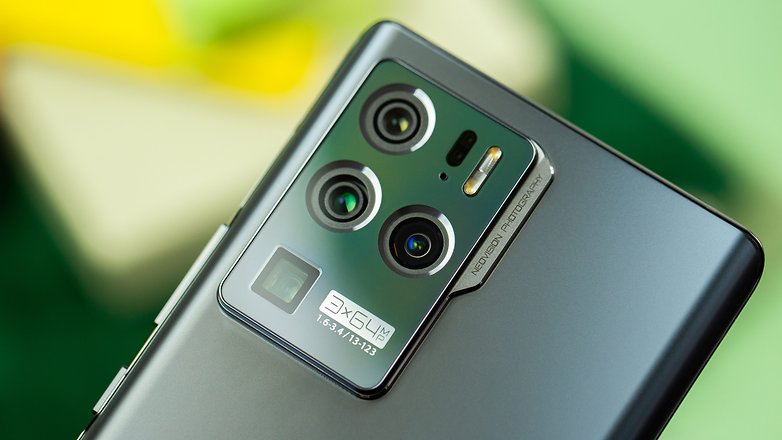
ZTE Axon 30 Ultra wide-angle and ultra-wide angle photos
The ZTE Axon 30 Ultra's main camera sensor is a Sony IMX686 that captures 16MP shots by default, offering pixel-binning of 4. This is a classic module that is also found on the Nubia RedMagic 6 (a subsidiary of ZTE) or the Asus ROG Phone 5.
During the day, it performs well. While it is clearly not at the level of the Galaxy S21 Ultra or a Xiaomi Mi 11 Ultra which carries larger sensors as well as a higher 108 MP resolution. The level of detail is good, without any smoothing on the horizon and pleasing colorimetry, although I tend to prefer saturated colors more than the average reviewer and end user.


With the ultra wide-angle lens, the detail level remains satisfactory although the lens lets in a little less light than in wide-angle since we lose out in the aperture as well as the sensor's physical size.
I did not notice any distortion at the edges of the image despite a very respectable FOV of 120°. Logically, there are some color inconsistencies and especially in terms of exposure (see the water below which is much duller in ultra wide-angle than with the main sensor).
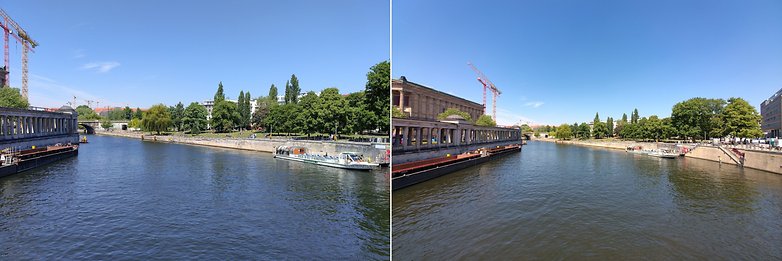

ZTE Axon 30 Ultra zoom photos
When it comes to zoom performance, the ZTE Axon 30 Ultra features a dedicated 8MP periscope telephoto lens that is capable of up to 5x optical zoom with a focal length equivalent of 123mm. The photo app offers default magnifications of 2x, 5x, and 60x.
In 2x, the telephoto lens does not come in, but rather, it is the third 64MP lens that sees action, otherwise known as the "portrait lens". The result is decent enough, but we did perceive a degree of digital smoothing to mask the artifacts when upscaling the image. As for the rest of its results, the dynamic range and colorimetry are quite accurate.
Beyond 2x zoom, it's the periscope telephoto lens that comes into play. I really expected myself to be disappointed, especially after Xiaomi and Samsung's zoom performance. At the end, the results were rather respectable at 5x and even 10x, although we find the same digital smoothing concerns that resulted in some loss of sharpness and detail.



I also had fun taking pictures at 60x zoom, which is the theoretical maximum that relies purely on digital magnification. Not surprisingly, the results are totally unusable and this function is nothing more than a gimmick. This is a shame since the telephoto lens has optical stabilization (OIS), but focusing is not as easy as with a Galaxy S21 Ultra or a Mi 11 Ultra where the photo app guides you with a preview of the zoomed subject, among others.
- Also read: The ultimate smartphone camera buying guide

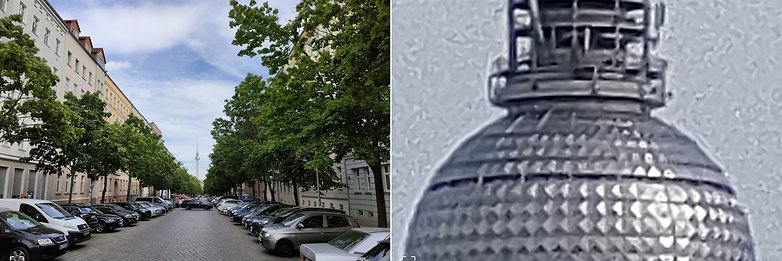

ZTE Axon 30 Ultra night shots
The night mode of the ZTE Axon 30 Ultra works with all lenses except the telephoto lens. This allows you to take night photos at 1x with the main wide-angle lens, 0.5x with the ultra wide-angle, and 2x with the portrait lens.
The rendering is very average overall, even in properly lit night environments, with the scene still looking underexposed with very limited dynamic range. Digital smoothing is once again all too present.

Overall, the camera module is not on par with an Android flagship that retails for more than €1,000. I do not understand the purpose of the portrait lens' existence. But the results are still worthy of a high-end Android smartphone in my opinion, like a Xiaomi Mi 11, a Galaxy S21 or a OnePlus 9, with the additional telephoto lens at an affordable price. Sounds like a sweet deal to me!
Solid battery life with a less impressive fast charge
The ZTE Axon 30 Ultra is powered by a 4,600 mAh battery that supports 65 watts of fast charging (Quick Charge 4+ and USB PD 3.0) when plugged in. It even comes with a charger in the box!
I liked the:
- Included 65W charger.
- Solid battery life performance.
I didn't like the:
- Fast wired charging is slower compared to its competition.
- Lack of wireless charging.
Apart from my screen test, I spent almost all of my time on the ZTE Axon 30 Ultra with the screen refresh rate locked in at 144 Hz without adaptive rate enabled. On an intense day of use accompanied by a photo-taking session of an hour and a half long, followed by an entire hour of graphics benchmarks, I emptied the battery after 12 hours.
For a more realistic experience, I averaged almost two full days with 6-7 hours of screen time per day before the handset fell below the 20% remaining battery life mark. To put it simply, a "normal" usage pattern and 6 hours of screen time per day will require you to hit the nearest power outlet after a day and a half, or perhaps longer than that.
The 65 watt fast charge is fast, with my best 0-100% score being 42 minutes. That's still slightly below what Xiaomi, Oppo, or OnePlus offer, but it is vastly superior to Samsung's figures with its poor 25 watts (what more with a 5,000 mAh battery on the S21 Ultra).
The ZTE Axon 30 Ultra's battery life is right up there with what you'd expect from a high-end smartphone with a sub-5,000 mAh battery. The screen obviously consumes the most energy, and I do think that its fast charging could have been a bit faster.
Hardware specifications
ZTE Axon 30 Ultra
| Components | Specifications |
|---|---|
| Processor | Qualcomm Snapdragon 888 |
| Memory |
|
| Expandable storage | No |
| Screen |
|
| Camera module |
|
| Video |
|
| Battery |
|
| OS | MyOS 11 based on Android 11 |
| Connectivity | Wi-Fi 6E / Bluetooth 5.2 / NFC / LTE / 5G / Dual SIM / Dual nano SIM |
| IP Certification | None |
| Dimensions & Weight |
|
| Price | $749 / $849 |
Conclusion
If I had to sum up the ZTE Axon 30 Ultra, I'd say it's a hodgepodge of hardware specifications and hot buzzwords of the day, ticking off all the right boxes in the specifications sheet for a high-end flagship device that closely resembles the Samsung Galaxy Note 20 Ultra.
Theoretically, it might seem to be rather logical to place the ZTE Axon 30 Ultra on par with the Samsung Galaxy S21 Ultra or Xiaomi Mi 11 Ultra. After all, it is a premium Android flagship with all the bells and whistles that you have come to expect, so what's the big deal?
A 144Hz AMOLED screen? Check. The Snapdragon 888 chipset? Check. 65-watt fast charging? Check. Quad-camera module with a telephoto lens? Check.
But upon taking a closer look at the software processing capability when it comes to photos, stability of the user interface or the lack of IP certification reminds us that this dreamboat does make some sacrifices to meet the more affordable price.
The overall user experience simply lacks polish, no doubt about that, but we still end up with a smartphone that offers a fairly complete experience overall. Unfortunately, there is still room for improvement, but almost all of the crucial parts are already there.
In conclusion, I'll only recommend anyone buying this smartphone if its manufacturer makes firm and clear commitments when it comes to Android security updates in the future. In addition, I'll only recommend it to users who value hardware/price above all else as opposed to a smooth user experience.
